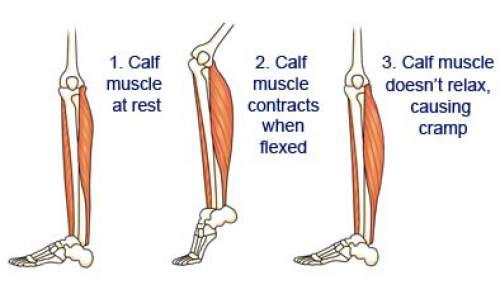It is well known that calf size is based on genetics, whilst this is true, it doesn’t mean you can’t add mass and define shape! We are going to correct some simple mistakes and help you achieve the calves you need.
Very few muscle groups are as stubborn to develop as your calves, and a constant lack of progress might compel you to stop training your lower legs entirely. However, before you give up completely, you should know that your calf trouble could be the result of some easily fixed training mistakes.
Every athlete wants a set of nicely developed calves to proportionate the legs. If you are one of the individuals that have been blessed with great lower leg genetics than heed the following mistake prevention tips closely for optimal calves.

Here is a list of top 8 mistakes that are keeping your calves small:
Training calves at the end of your workout:
Calves are often neglected or saved for the last part of a leg workout, this is when you’re tired and lack energy. Muscles can’t grow if they receive sub-par training, you must start training them the way you train your back or chest: fresh, from every angle, and to complete exhaustion.
Start your leg training with calves, train them with the same intensity as you do your quads and hamstrings. If you’re trying to hit your upper legs hard and don’t have the energy to do the same with calves, add an extra calf day into your split or add the work to a different workout. The point is to ensure that your calves don’t suffer from lack of attention.
Related article: 4 Best Calf Exercises To Get Diamond Shaped Calves
Training Calves Once a Week:
Training calves once a week is one of the biggest mistakes you can make. Even if you only want to keep one major leg day a week (quads, hamstring, calves), try adding calves onto other workouts throughout the week so your training calves 2-3 times a week and sticking to the 10-15 Rep Range.
While this rep range might be effective for most other parts of your body, calves are a bit different. You need to look at doing 20+ reps preferably closer to 30. This forces you to use a lighter weight which means better form.
This leads to a better contraction of the calves muscles and a better pump following those 30 reps. It also allows you to overload a muscle that is used to high rep work (remember your calves get a lot of work naturally throughout the day just from walking around.
Using Too Heavy Weights:
While lifting heavy is important to building muscle, if the weights are so big that you can’t use proper form then you won’t see much benefit. Symptoms of using too much weight include bouncing the weight at the bottom of reps, or not contracting at the top of reps.
Worse you might end up bringing other leg muscles into the exercise to help move the weight. In addition to reducing your gains training this way will also set you up for possible injury. If you feel pain in your Achilles tendon then you are definitely lifting too much weight.
Similarly, if you are unable to perform standing calf raises without bending your knees, or seated calf raises without using your arms to help the weight up then you need to adjust the resistance downwards.

Only Training With Small Weights:
To look on the opposite point of view, you cannot expect results only training with light weight and high reps. Calves are one of the high resistance muscle groups that require overload once in a while to grow. Try something between the two: heavy weight/low reps and low weight/high reps and see which gives you the best results. Most will find a combination of the two gives optimal calve growth.
Related article: 11 Dynamic Stretch Exercises To Massage Hard To Reach Muscles
Foot placement:
A lot of people think that you can hit different parts of the calves depending on whether you point your feet inward, straight ahead or outwards. People who turn their feet at extreme angles are actually reducing the effectiveness of the exercise and also putting a lot of stress on the joints and tissues in the knees and ankles.
Not isolate and contract the muscles:
In order to get the full benefit of the calf raise you need to emphasis the contraction at the top of the exercise. Focus on flexing hard at the top of each rep and it will make all the difference in your workout.
Once you’ve contracted properly at the top of the rep it doesn’t mean you can drop the weight down to the beginning. Lower the weight slowly and under control and do this for each rep.
Each part of the rep should be under control. Taking your time throughout each rep will increase the amount of time your calves are under tension, even when using the same weights and reps you normally do.

Related article: Mastering Seated Calf Raises: Guide, Form, Flaws, Set Up & Execution
Skipping stretching:
This commonly made mistake can be applied to any muscle in your body but is quite noticeable when you don’t stretch your calves. If you suffer from flat feet or high arches you might already notice the effects of skipping the stretch after a workout.
You might feel pain, but there is another reason to stretch; it stretches out the fascia, a thin connective tissue “cocoon” around each muscle, which can get very tight and compress the muscle. This creates a compacting effect on the muscle so it cannot expand and grow as effectively.
You also need to fully stretch your calves between sets and immediately after training them. This increases mobility, enlarges the fascia and boosts the pump, which in turn aids recovery and growth.

